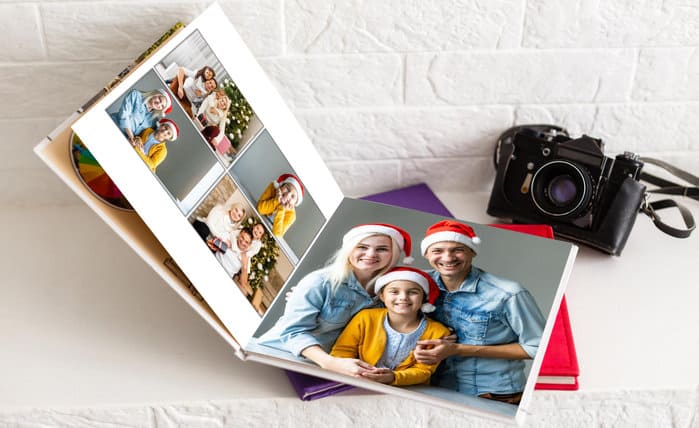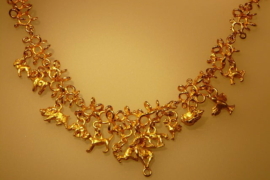Creating a photo book can be a rewarding experience. It provides a tangible way to revisit memories, tell a story, or showcase your creative work. However, curating and designing a photo book that does justice to your images can be a complex task. This article will guide you through this process, helping you create a captivating photo book that resonates with your vision.

Planning Your Photo Book
Before you dive into selecting images, it’s essential to have a clear concept or theme for your photo book. You can find out more about photo books here. This theme could be as specific as a family vacation, a wedding, or as broad as a year in review, landscapes, or a professional portfolio. The theme you choose will guide your image selection and the overall design of your photo book. Spend time thinking about what you want your photo book to communicate. Is it about evoking nostalgia, showcasing your photography skills, or sharing your child’s first year? Having a clear objective will set the stage for the rest of your decisions.
Curating Your Images
Once you have a theme in place, it’s time to curate your images. This is perhaps the most time-consuming aspect of creating a photo book, but it’s also one of the most crucial. Start by gathering all potential images and then gradually whittle them down. Be prepared to be ruthless — not every image will make the cut. Look for images that align with your theme, are high-quality, and evoke emotions or tell a story. It’s often helpful to enlist a second pair of eyes during this process. Someone else might see value or a connection in a photo that you might have overlooked.
As you curate, think about the flow of your photo book. How will one image lead to the next? Does it tell a story or create an emotional arc? For instance, a photo book of a family vacation could start with images of departure, move through the places visited, and conclude with a joyous return home.
Selecting the Right Layout
Now that you have your images, it’s time to select your layout. Many photo book services offer a range of pre-made layouts, or you can choose to create your own. When deciding on a layout, consider the number and orientation of your photos, the style of your images, and your theme.
Try not to overcrowd your pages — giving your photos some breathing room can make your photo book feel more sophisticated and easier to engage with. On the other hand, collages of several photos can create an engaging overview or depict multiple angles of a particular event. Variety in your layouts will keep your photo book dynamic and exciting to flip through.
Designing Your Photo Book
The design of your photo book should complement your images and reinforce your theme. Elements of design to consider include the cover, the font, and the color scheme.
Your cover is the first impression of your photo book, so choose an image that is eye-catching and representative of your theme. Some people prefer to keep it simple with a title and a single photo, while others opt for a collage of images.
Font selection might seem like a minor detail, but it significantly influences the feel of your photo book. A sleek sans-serif font might suit a professional portfolio, while a whimsical script might be perfect for a baby’s first year photo book.
The color scheme you choose should complement your photos, not distract from them. It can be as simple as black and white or include background colors that bring out the colors in your photos.
Adding Text to Your Photo Book
Adding text to your photo book can provide context to your images. This could include dates, locations, quotes, or longer descriptions. Be mindful of the text size and placement to ensure it’s readable but doesn’t overshadow the images. The key is to strike a balance that complements your visual narrative. However, if your images are strong and self-explanatory, you may choose to let them speak for themselves without much text.
Reviewing and Revising Your Photo Book
Once you’ve selected your images, decided on a layout, and designed your photo book, take the time to review it carefully. Look at it as a whole and ask yourself whether it meets your initial objective. Does the flow of images make sense? Are the design elements consistent throughout the book? Are there any errors in the text? It’s often beneficial to take a break and come back to your photo book after a day or two with fresh eyes for this review stage.
Also, consider getting feedback from someone else. They can provide a new perspective and may notice things that you have missed. Listen to their feedback and make revisions as needed. Remember, your photo book is a reflection of your creativity and vision — it’s essential that you’re happy with the final product.
Printing Your Photo Book
After all your hard work curating and designing, it’s time to print your photo book. Select a printing service that matches the quality your book deserves. Consider factors like printing quality, paper type, binding, and cover options. Remember, this is a keepsake that should stand the test of time.
Creating a photo book is more than just compiling images; it’s about telling a story, preserving memories, or showcasing a body of work. While the process can be time-consuming, by carefully curating your images, selecting an appropriate layout, designing with intention, adding meaningful text, and reviewing meticulously, you can create a photo book that you’ll be proud to display on your coffee table or gift to a loved one. And, perhaps most importantly, the process allows you to engage deeply with your photos, memories, and the story you want to tell.




